Stork's Bill
Low, dense stands of this competitive weed can cause yield reductions and the seed is very difficult to clean out of small seeded crops.
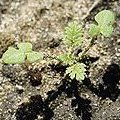 |
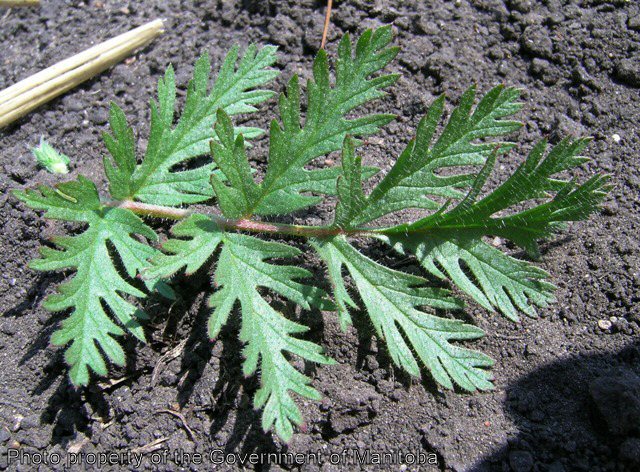 click to enlarge |
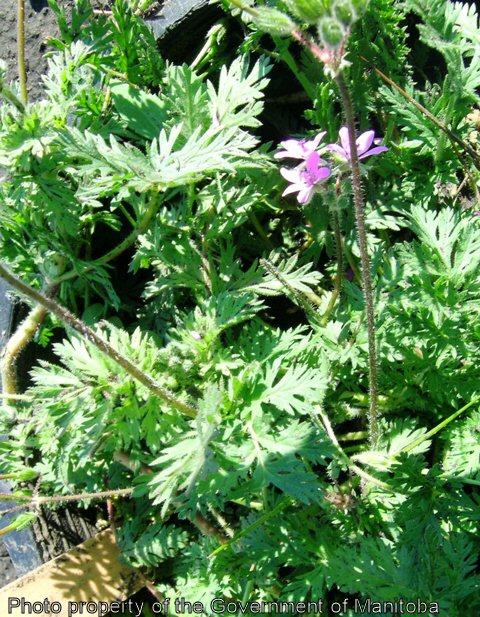 |
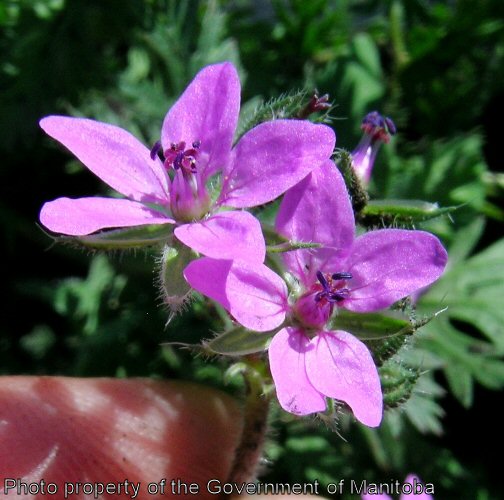 |
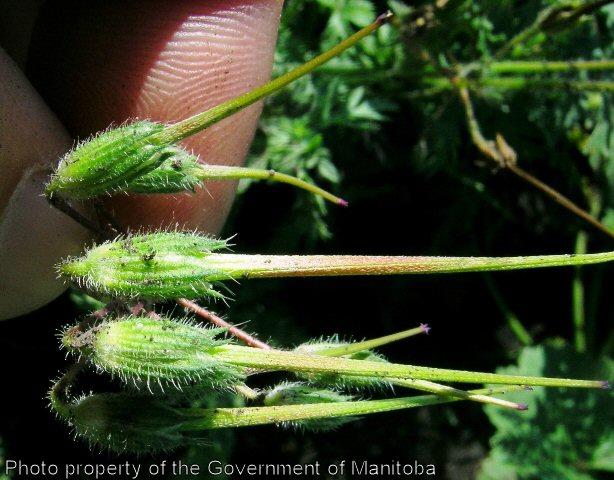 |
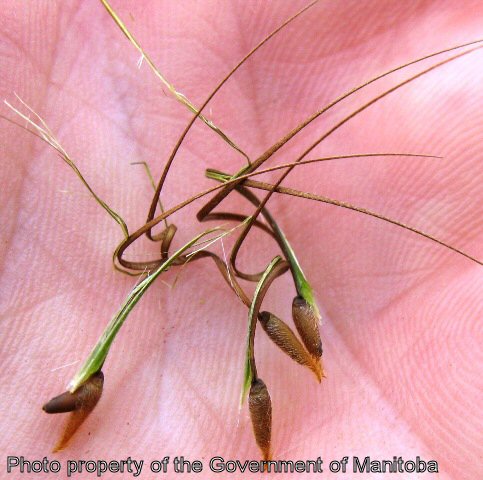 |
 |
Biology
Stork's bill is an annual, winter annual or biennial. It is usually a low prostrate plant, consisting of a basal rosette and flowering stalks. The stalks are erect, about 40 cm (16 in.) high, and originate in the axils of the leaves. The leaves are divided into fine leaflets, similar to those of a carrot. The flowers are about 1 cm (1/2 in.) across, pink or purplish, and borne in clusters of 2-12 on long flower stalks. The sepals of the flowers are awn-tipped and hairy.
The flower column is 2.5-4 cm (1-1 1/2 in.) long and resembles a stork's bill. At maturity, the developing seed splits into 5 segments, each with a long, spirally-twisted tail that carries a seed at its base.
The seeds survive for 1-3 years in the soil. When the soil is disturbed, there are flushes of germination. Developing plants prefer cool conditions and tolerate shade well.
Scouting Techniques
Take a minimum of 20 weed counts across the field. Check low spots for patches.
Scout fields early because stork's bill quickly grows past the recommended stages for herbicide application. Note that the first true leaves are very close to the ground and hard to see.
Effects On Crop Quality
Seed may be difficult to clean from small seeded crops like alfalfa.
Threshold/Yield Loss
Storks-bill is drought tolerant. During dry seasons, it can seriously reduce crop yields. Densities above 20 plants per square metre (sq. yd.) can cause up to 20% yield reductions in field peas. It is considered to be a serious competitor in dry beans, field peas, and potatoes.
Control Tips
Winter annual stork's bill plants compete and set seed early in the spring and should be controlled the previous fall with tillage after the majority of plants have germinated.
Stork's bill should be treated as early as possible with herbicides. The weed quickly advances through it's growth stages, escaping the window for herbicide application. There are very few herbicides registered for the control of stork's bill.

